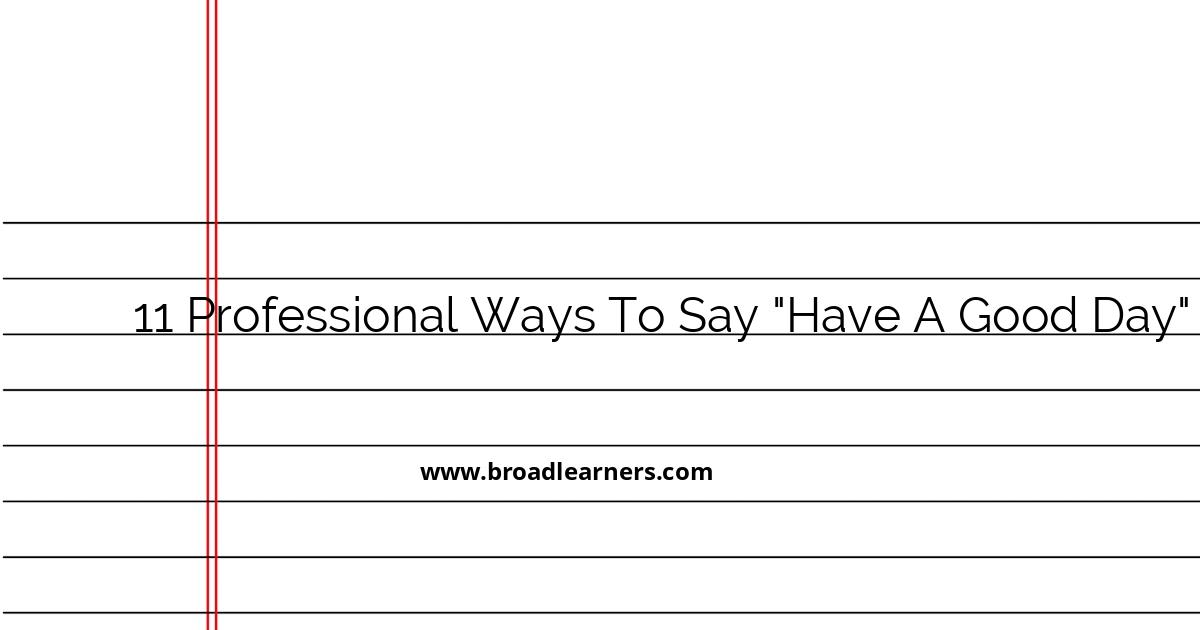Sending well wishes at the end of an email can leave a positive impression and enhance your professional communication. Instead of the standard 'Have a good day,' there are several professional alternatives you can use to convey the same sentiment. Here are 11 ways to say 'Have a good day' in an email professionally:
- Wishing you a productive day ahead.
- Hope you have a successful day.
- Have a splendid day.
- Enjoy your day to the fullest.
- May your day be as wonderful as you are.
- Here's to a fantastic day!
- Enjoy the rest of your day.
- Hope your day is going well.
- Wishing you a smooth and pleasant day.
- Make the most of your day.
- Have an amazing day!
Let's delve into each alternative with examples:
1. Wishing you a productive day ahead
This alternative not only extends a positive sentiment but also encourages the recipient to make the most out of their day productively. It reflects both motivation and positive energy towards their tasks.
Example:
Hi Lisa,
Thank you for the detailed report. Wishing you a productive day ahead.
Best regards,
Raymond
2. Hope you have a successful day
By using this phrase, you're expressing your best wishes for the recipient's endeavors for the day. It shows your interest in their success and happiness.
Example:
Dear Mark,
I appreciate your insights in the meeting earlier. Hope you have a successful day.
Sincerely,
Claire
3. Have a splendid day
This offers a warmer and more personal touch than the typical well wishes. It shows care and warmth in your professional communication.
Example:
Hi Emma,
Thanks for sending over the documents. Have a splendid day!
Kind regards,
Jonathan
4. Enjoy your day to the fullest
This encourages the recipient to make the most of their day, indicating a blend of encouragement and positive reinforcement.
Example:
Dear Sarah,
Great job with the proposal! Enjoy your day to the fullest.
Warm regards,
Lucas
5. May your day be as wonderful as you are
This phrasing provides a personalized touch of admiration and appreciation, perfect for a colleague or client you know well.
Example:
Hi Michael,
Your presentation was impressive today. May your day be as wonderful as you are.
Best,
Anna
6. Here's to a fantastic day!
Using this phrase offers a light-hearted and cheerful ending to your email, filled with positivity.
Example:
Dear George,
Thanks for the quick turnaround! Here's to a fantastic day!
Regards,
Elaine
7. Enjoy the rest of your day
Best used when you are corresponding later in the day, ensuring the recipient has a pleasant remaining time.
Example:
Hi Jessica,
Thanks again for the meeting updates. Enjoy the rest of your day.
Kind regards,
Adrian
8. Hope your day is going well
This can be used to express care and concern for the current well-being of the recipient, extending a thoughtful gesture.
Example:
Dear Thomas,
Just wanted to check in. Hope your day is going well.
Best wishes,
Chloe
9. Wishing you a smooth and pleasant day
This phrasing aims to project tranquility and ease for the recipient's day, which can be comforting.
Example:
Hi Olivia,
Your assistance was invaluable today. Wishing you a smooth and pleasant day.
Thank you kindly,
Evan
10. Make the most of your day
Encourages the recipient to take advantage of every opportunity throughout the day, adding motivation.
Example:
Hi Robert,
Best of luck with your meeting! Make the most of your day.
All the best,
Natalie
11. Have an amazing day!
This is an enthusiastic form of wishing someone well, spreading positivity and goodwill.
Example:
Dear Sophia,
Thanks for your email. Have an amazing day!
Cheers,
Victor
These 11 alternatives to saying 'Have a good day' can enhance your email interactions significantly. Selecting the right phrase helps convey your thoughtful intent and maintain a positive tone in your professional communications.

Did I miss anything? Respond below